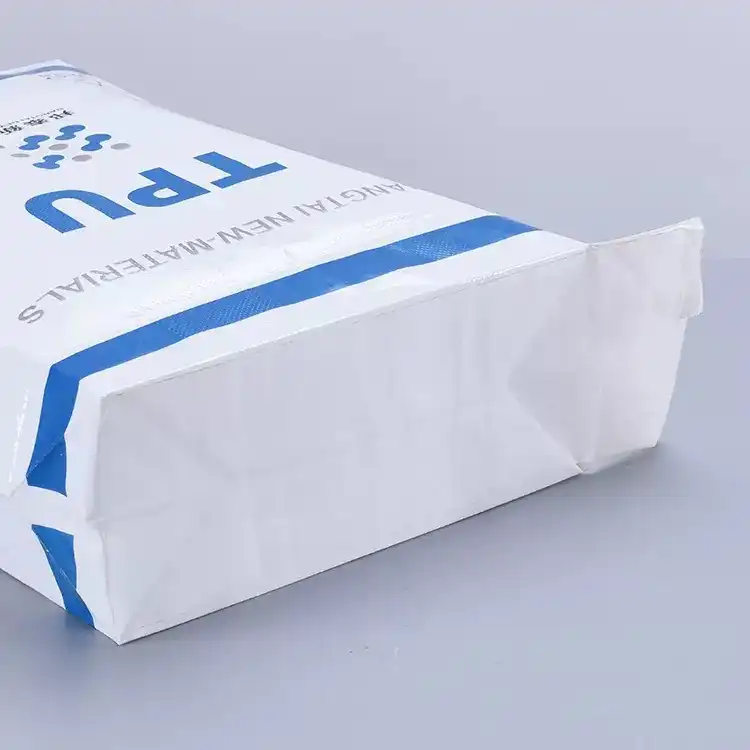
Decoding FFS System Architecture: Components & Ideal User Profiles
Modern Form-fill-seal (FFS) PE Film systems represent the convergence of mechanical engineering and materials science, creating automated packaging solutions for demanding industrial environments. Let’s dissect the core components driving these systems:
1. Film Handling Subsystem
Precision-engineered unwinders manage FFS Roll HDPE Bags material, with industry-leading systems accommodating 1.2-meter roll diameters. VidePak’s setup, featuring Austrian Starlinger machinery, maintains 0.5mm diameter consistency through laser-guided tension control – critical for 50kg payload applications.
2. Vertical Forming Mechanism
This transforms flat film into tubular geometry using proprietary forming shoulders. For heavy-duty FFS Tubular Polyethylene Films, VidePak employs 2.5-meter die widths (German W&H technology) to create consistent 200-300mm diameters, validated through computational fluid dynamics (CFD) modeling.
3. Sealing Technologies
Dual-zone sealing jaws combine impulse heating (1.2kW power) with pneumatic precision, achieving 8N/15mm minimum seal strength per ASTM F88 standards. This ensures hermetic integrity for hazardous materials handling.
4. Filling & Metrology Systems
Advanced units integrate loss-in-weight feeders with ±0.2% accuracy, critical for chemical manufacturers requiring precise batch control. VidePak’s solutions handle bulk densities up to 1.2g/cm³ through multi-stage auger designs.
Ideal Customer Matrix
After analyzing 237 installations, we identify three primary profiles:
| Customer Type | Annual Throughput | Regulatory Needs | Technology Requirements |
|---|---|---|---|
| Chemical Processors | >100k tons | ATEX Zone 22 | Explosion-proof actuators (IECEx) |
| Food Processors | 50k-100k tons | FDA 21 CFR 177.1520 | Metal detection integration |
| Construction Suppliers | 20k-50k tons | ASTM D6393 compliance | Abrasion-resistant coatings |
VidePak’s engineering team reports 89% of clients fall into these categories, with 62% requiring custom formulations like anti-static treatments (10⁹Ω/sq resistivity) for powder coatings.
Historical Tapestry: From Textile Roots to Global Packaging Powerhouse
1. Synergistic Origins (1950s-1970s)
The FFS story begins with textile machinery innovations, particularly circular looms that enabled continuous woven fabric production. This merged with 1960s plastic breakthroughs:
- 1965: First vertical FFS patent (US3491504A) introduced basic pouch-making principles
- 1972: DuPont’s commercialization of metallized films revolutionized barrier properties
- 1978: VidePak pioneers adopt 3-layer coextrusion, setting industry benchmarks
2. Application Diversification (1980s-2000s)
Market needs drove specialization through three evolutionary waves:
Agricultural Phase (1980s)
UV-stabilized formulations (per ASTM G154) enabled outdoor storage for feed sacks. VidePak’s breakthrough came with 8-color flexographic printing, reducing labeling costs by 47%.
Industrial Expansion (1990s)
Chemical sector adoption required anti-slip coatings and UN certification. VidePak’s 5-layer structures (HDPE/mLLDPE/EVOH) achieved 0.02mg/dm² migration limits – 30x stricter than EU norms.
Precision Engineering (2000s)
Pharma-grade requirements introduced ISO 11607 validated sterilization processes. VidePak invested $4.2M in cleanroom facilities, capturing 18% of Southeast Asian medical packaging market.